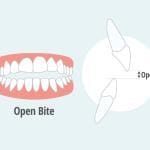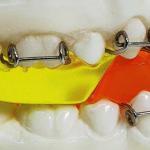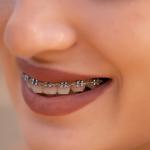Dental braces, also known as orthodontic braces, are a type of dental appliance used to correct dental misalignment, including crowded or crooked teeth, overbite, underbite, and malocclusion. They work by applying gentle and continuous pressure on the teeth to move them into the correct position over time. In this article, we will discuss everything you need to know about dental braces.
Types of Dental Braces
There are several types of dental braces, and the type of braces suitable for you will depend on various factors, including the severity of your dental misalignment, your age, and personal preference. Here are some common types of braces:
- Metal Braces
- Ceramic Braces
- Lingual Braces
- Self-Ligating Braces
- Invisalign
Metal Braces
Metal braces are the most common type of braces, made of high-quality stainless steel. They consist of metal brackets and wires, which are adjusted periodically to apply the right amount of pressure on the teeth. Metal braces are the most noticeable type of braces but are also the most affordable.
Ceramic Braces
Ceramic braces are similar to metal braces but are made of clear or tooth-colored materials, making them less noticeable. They are an excellent option for people who want a more discreet option, but they are more expensive than metal braces.
Lingual Braces
Lingual braces are similar to traditional metal braces but are placed on the backside of the teeth, making them almost invisible. They are a good option for people who want to avoid the appearance of braces but are more challenging to clean and maintain than traditional braces.
Self-Ligating Braces
Self-ligating braces are similar to traditional metal braces but do not require elastic bands or metal ties to hold the wires in place. Instead, they use a specialized clip or gate to hold the wire, which reduces friction and results in less discomfort.
Invisalign
Invisalign is a clear aligner system that uses a series of custom-made, removable aligners to gradually move the teeth into the correct position. They are almost invisible, and the aligners can be removed for eating, brushing, and flossing, making them a popular option among adults.
The Procedure
The process of getting braces typically involves several steps, including an initial consultation with an orthodontist, X-rays, and dental impressions to create a customized treatment plan. The braces are then attached to the teeth, and adjustments are made periodically to ensure the teeth are moving in the correct direction.
The amount of time required for treatment will depend on the severity of the dental misalignment and the type of braces used. On average, treatment can last from 6 months to 2 years or more.
Caring for Braces
Caring for braces is essential to ensure the best results and prevent complications. Here are some tips for taking care of braces:
- Brush and floss regularly
- Avoid hard or sticky foods
- Wear a mouthguard
- Attend regular appointments
Brush and floss regularly
Brush your teeth at least twice a day and floss daily, paying extra attention to the areas around the brackets and wires.
Avoid hard or sticky foods
Hard or sticky foods can damage the braces or get stuck in the wires, leading to discomfort and difficulty cleaning.
Wear a mouthguard
If you play sports, wear a mouthguard to protect your braces and teeth from damage.
Attend regular appointments
Regular appointments with your orthodontist are essential to monitor progress and make adjustments to the braces as necessary.
Potential Risks and Complications
While braces are generally safe and effective, there are some potential risks and complications associated with them. These can include:
- Tooth decay and gum disease
- Mouth sores
- Discomfort and pain
- Allergic reactions
- Damage to teeth or braces
Tooth decay and gum disease
Braces can make it harder to clean the teeth and gums, leading to an increased risk of tooth decay and gum disease.
Mouth sores
The brackets and wires can irritate the mouth and lead to the development of some sores like cold sore.
Discomfort and pain
Braces can cause discomfort, toothache and pain, particularly after adjustments.
Allergic reactions
Some people may be allergic to the materials used in braces, such as nickel.
Damage to teeth or braces
Eating hard or sticky foods or participating in contact sports without a mouthguard can cause damage to the braces or teeth.
It is essential to communicate any concerns or issues with your orthodontist promptly.
Costs of Dental Braces
The cost of dental braces varies depending on the type of braces and the length of orthodontic treatment. Metal braces are typically the most affordable option, while lingual braces and Invisalign tend to be more expensive. In addition to the cost of the braces themselves, there may be additional fees for X-rays, dental impressions, and other necessary procedures.
Insurance may cover some or all of the costs of braces, depending on the policy. It is important to check with your insurance provider to determine what is covered and what out-of-pocket expenses may be required.
Conclusion
Dental braces are a popular and effective way to correct dental misalignment and improve the appearance of the teeth and smile. With several types of braces available, there is an option suitable for almost everyone. It is important to care for braces properly and attend regular appointments with an orthodontist to ensure the best results and prevent potential risks and complications.





